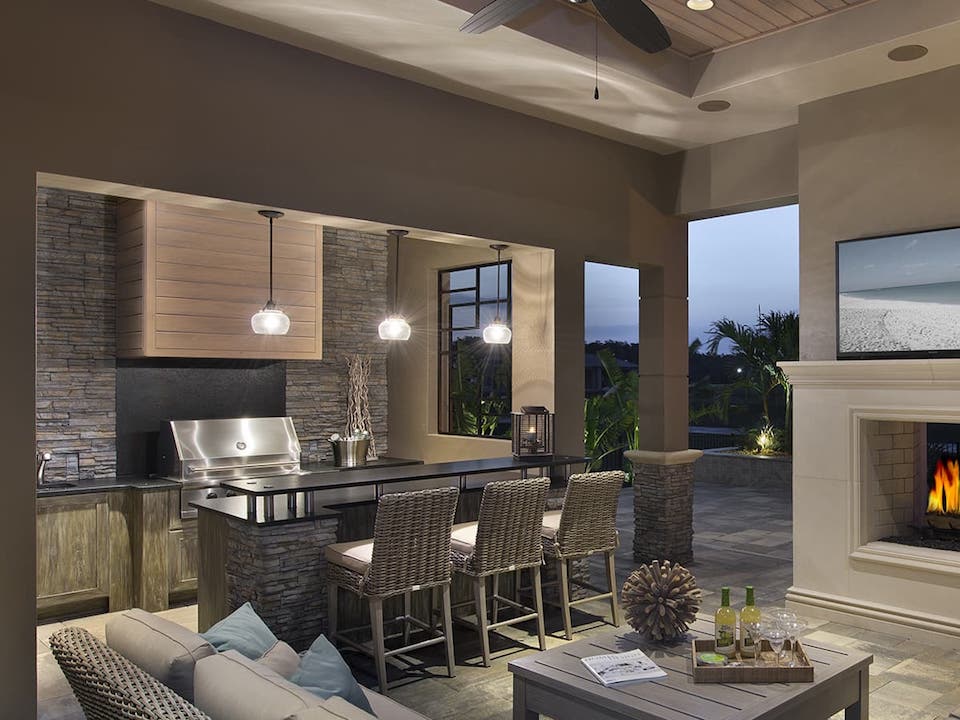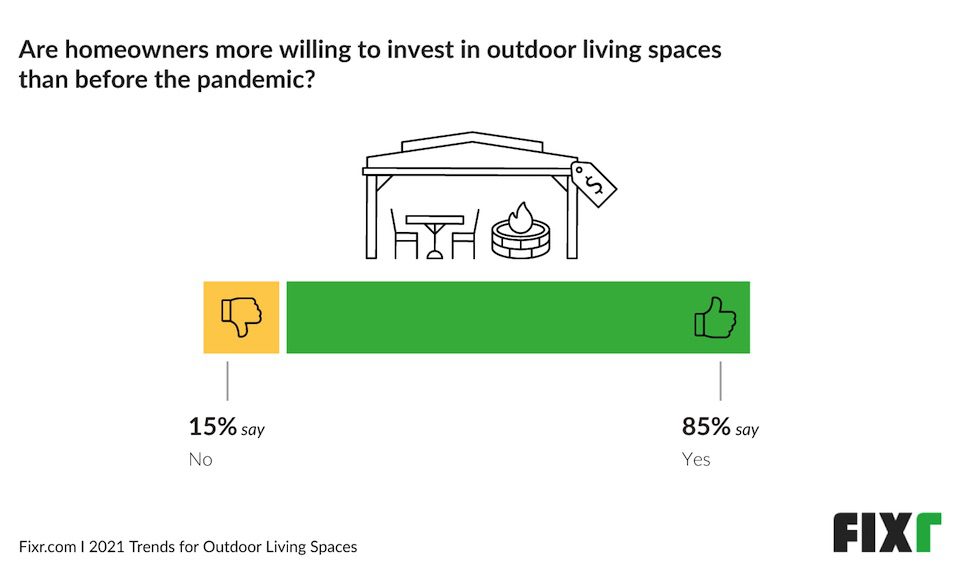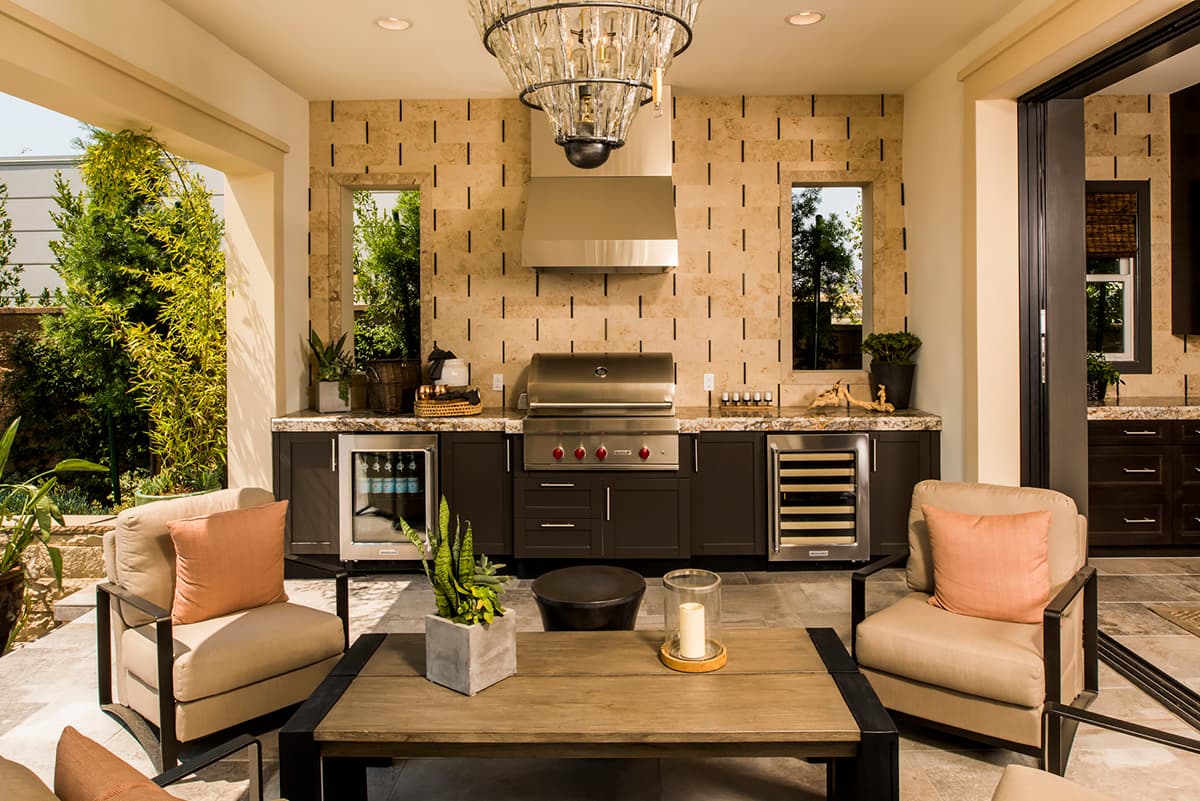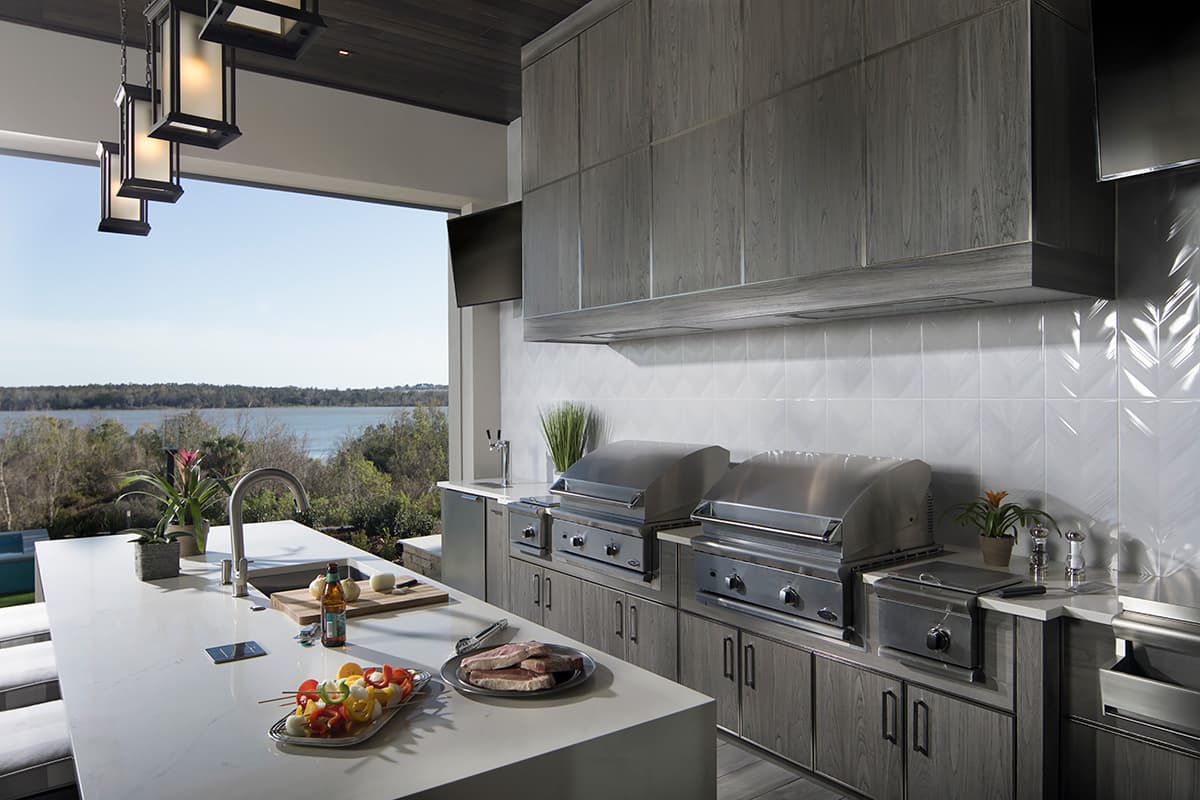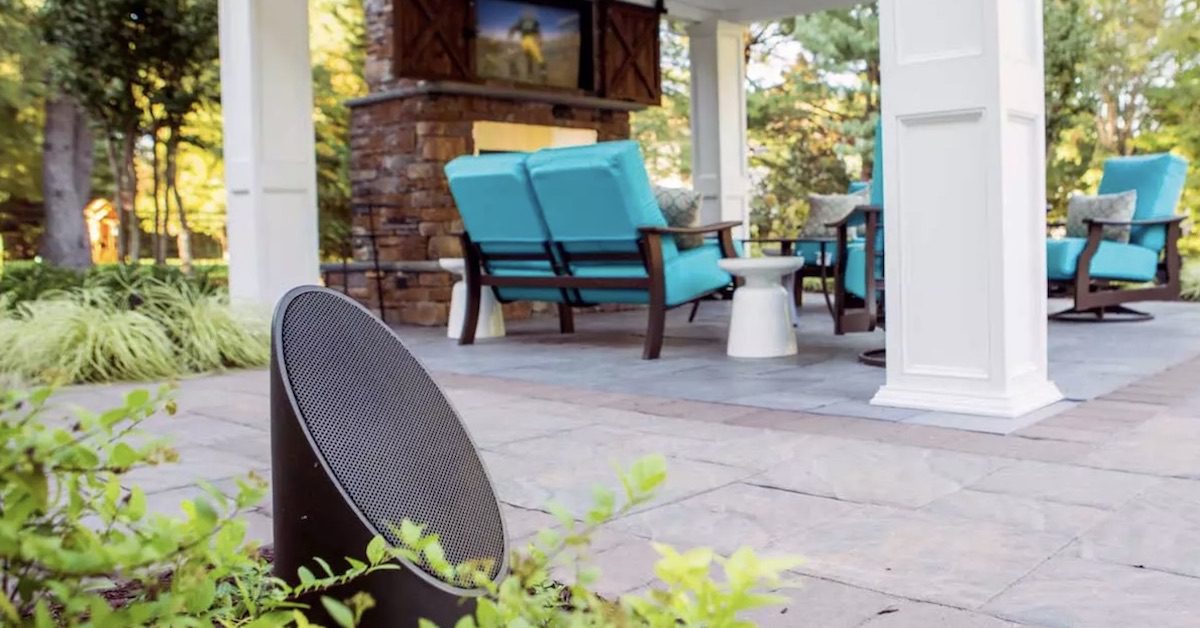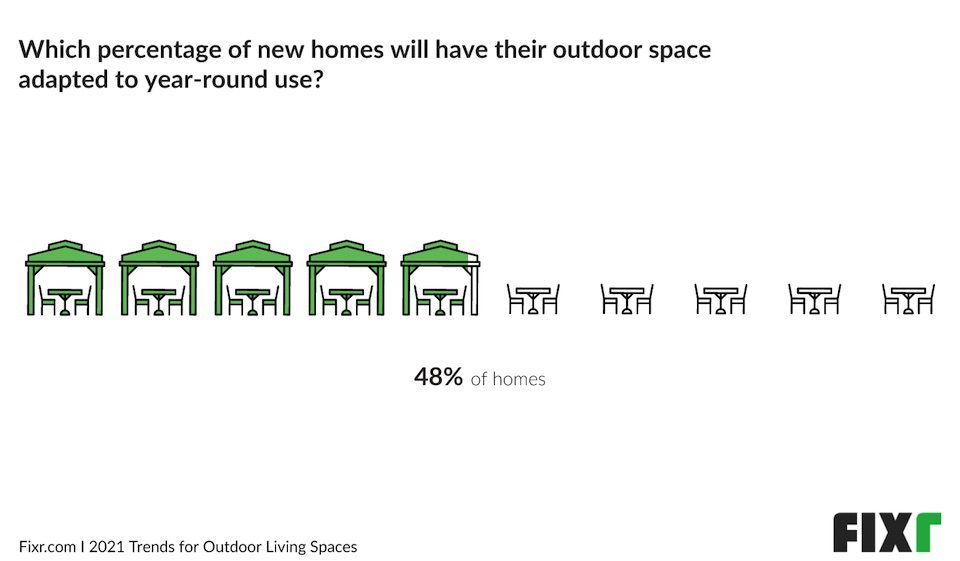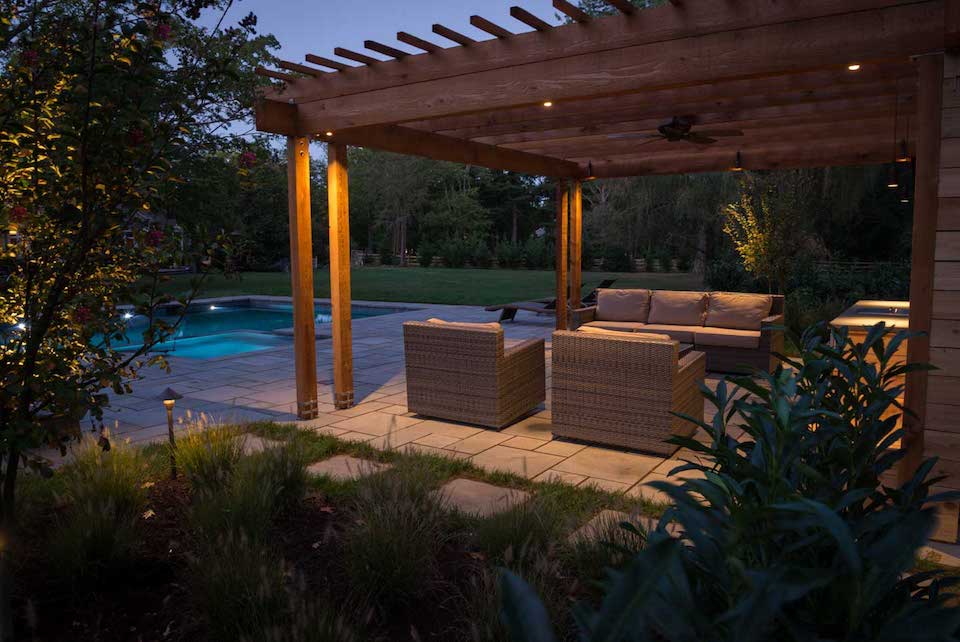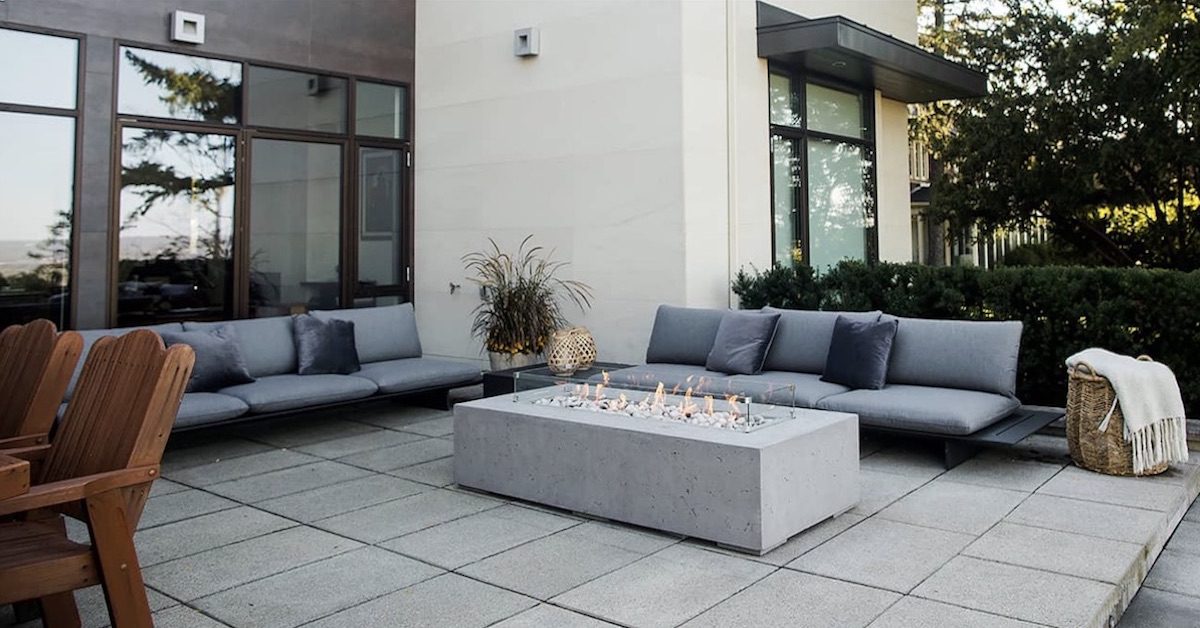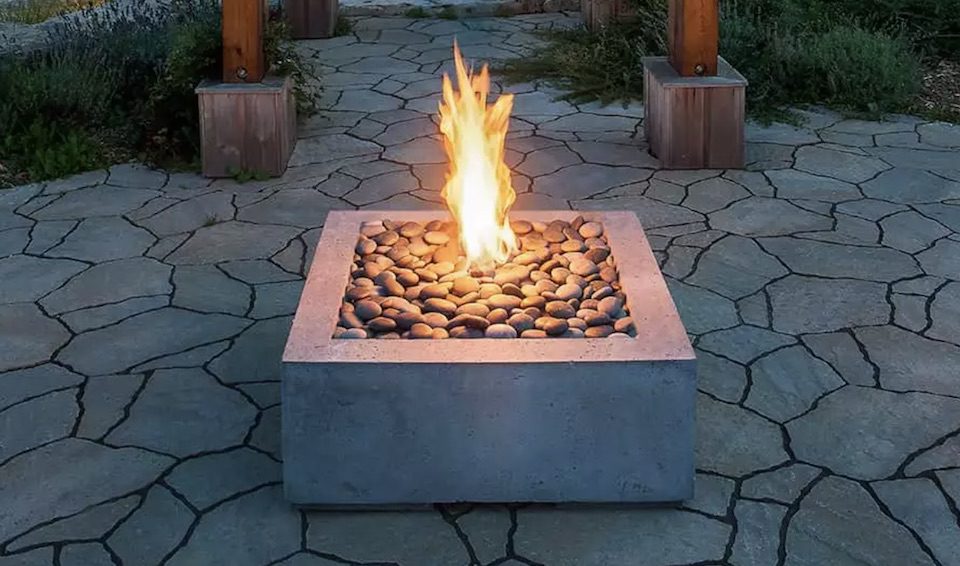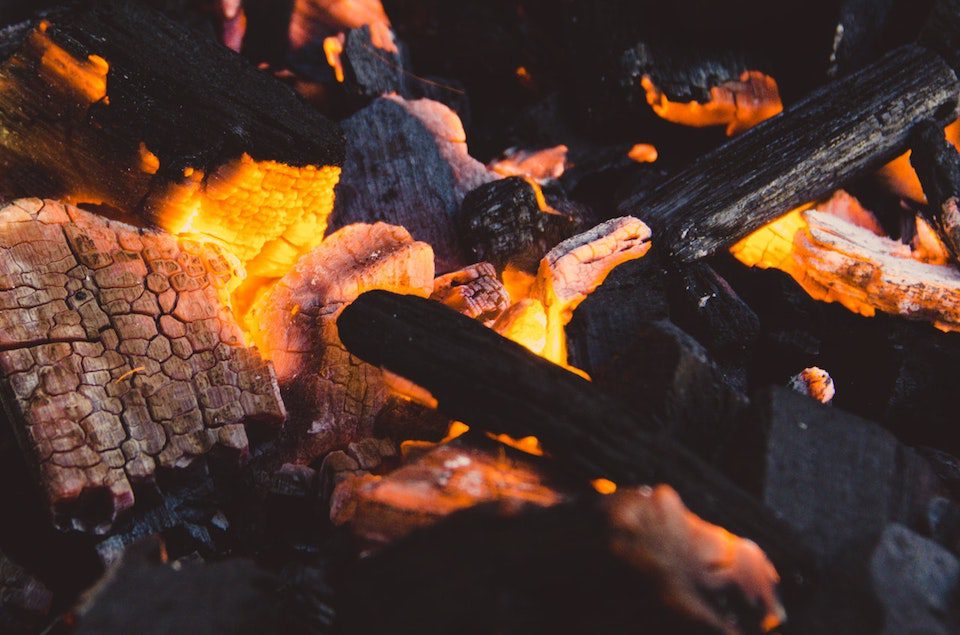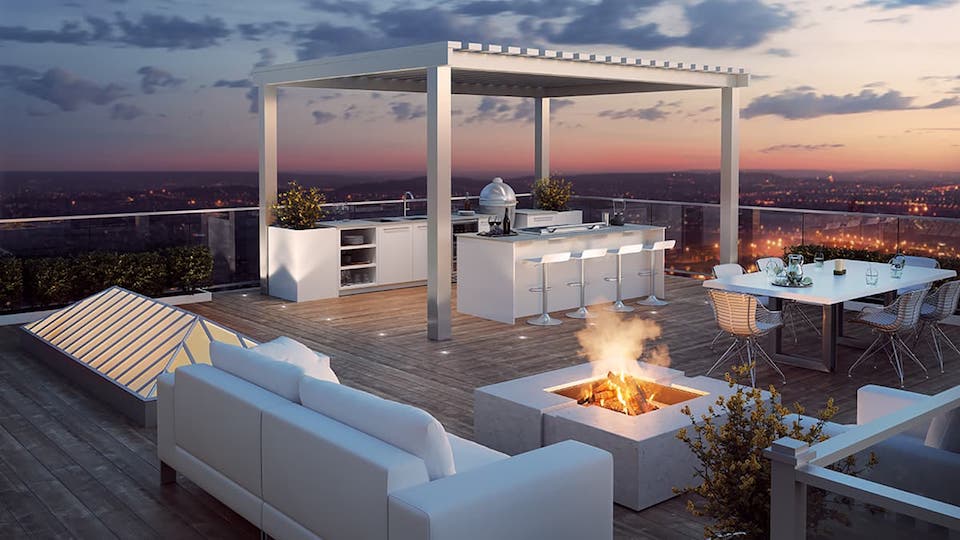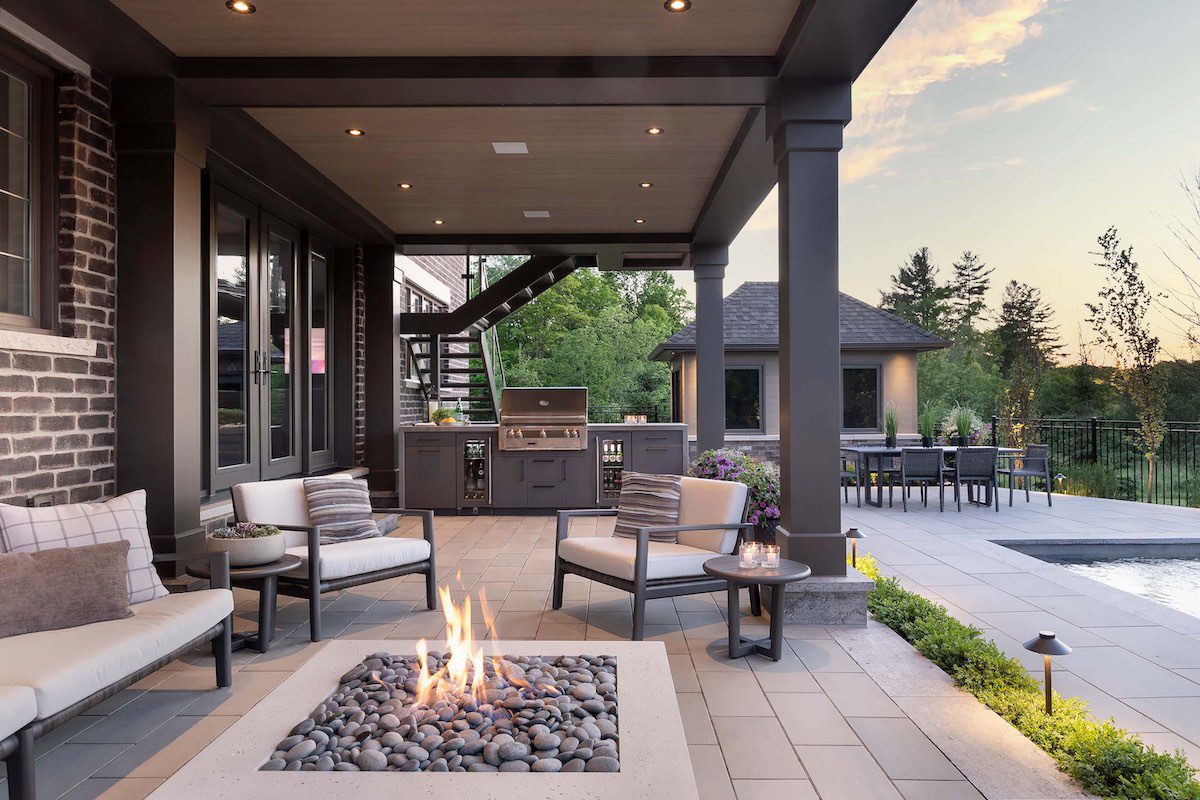
Anyone with a home outdoor living space knows how much chilly weather can dampen your enthusiasm to use it.
Summer never seems to last long enough in Canada and many of us find ourselves longing to extend the use of our decks, patios, and backyards.
Investing in one of the various types of practical outdoor heating options is the best way to squeeze a few more weeks of enjoyment from your backyard during the year.
Find out how to extend your outdoor living season with our guide to the best outdoor heating options.
Outdoor heating products are popular
The pandemic accelerated consumer interest in buying outdoor heating products and their popularity continues. That’s not surprising, considering how many homeowners have invested in backyard upgrades in recent years.
An outdoor kitchen and living space serve as a valuable extension of the home for relaxation and socializing. Adding a fire feature for warmth to get more use out of it makes perfect sense.
Fixr’s annual Outdoor Living Trends survey found that 58% of home design and construction experts believe homeowners will invest in a backyard fire feature this year.
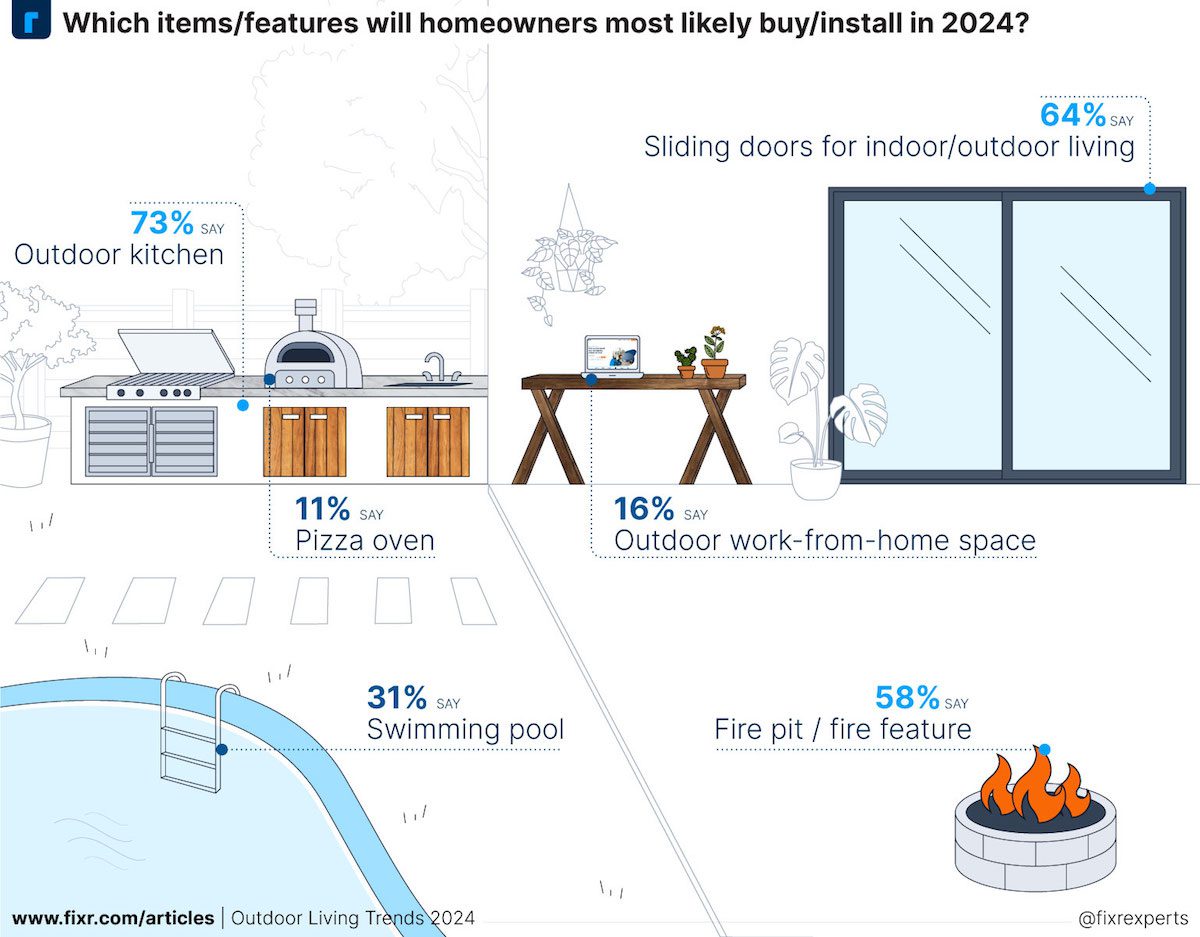
Infographic from Fixr.com
A few more factors that make today’s outdoor heating options more appealing are:
• a rapidly growing variety of stylish outdoor heating products to choose from
• an increased appetite for more of the comfort-giving amenities our indoor living spaces have
• a wider selection of energy-efficient outdoor heating options
What are your outdoor heating options?
Outdoor heating solutions are versatile and come in various shapes, sizes, fuel types, and materials.
To make the best choice for your deck or patio, factors like your budget, the square footage you want to heat, the desired aesthetic, and the environment of your space need to be considered.
The first three factors are pretty self-explanatory. “Environment of your space” simply refers to taking things such as how much your outdoor area is shaded and affected by the wind into consideration.
We’ll explain what each of the following most commonly used outdoor heating options offers:
- fire pits and fire tables
- patio heaters
- outdoor fireplaces
- chimineas
Don’t let a crisp spring or fall day or a chilly summer evening deter you any longer from using the outdoor living area you’ve invested in. Get some outdoor heating ideas to add warmth and comfort to your deck or patio.
1. Fire pits and fire tables
One of the most popular outdoor heating options are fire pits and fire tables. The term “fire pit” traditionally referred to an in-ground enclosure for burning wood. Nowadays, “pit” and “table” are often used interchangeably to describe above-ground enclosed structures where a fire burns with a wood or gas fuel source. For simplicity’s stake, we’ll refer to them as “fire pits”.
From a practical functionality perspective, fire pits naturally provide heat and a modest amount of area lighting, as well as ambiance. What you might not appreciate is the attractive decorative touch they add to a backyard space and how much of a central focal point they become.
Fire pits come in a variety of styles, typically in round, square, and rectangular shapes. Gas-powered and wood-burning fire pit designs can be simple or more elaborate and high-end, allowing for various customization options. Here’s a brief explanation of what else each type offers.
Gas fire pits
Arguably, the best way to heat a deck or patio is a gas fire pit because of how many benefits they offer. Gas fire pits use propane or natural gas as a fuel source.
A few more factors make gas fire pits an attractive outdoor heating option compared to wood-burning fire pits:
- Convenience: many gas fire pits easily ignite with the flip of a switch or push of a button.
- More decorative appeal: high-end gas fire pits add a luxury touch with elegant designs and decorative media like coloured lava rocks and ceramic stone.
- Enviro-friendly: natural gas and propane burn significantly cleaner than wood and the heat level can be controlled.
- Low-maintenance: gas fire pits don’t need a constant supply of firewood and there’s no ash cleanup required.
- Smoke-free: the cleaner burn from gas doesn’t produce any irritating smoke.
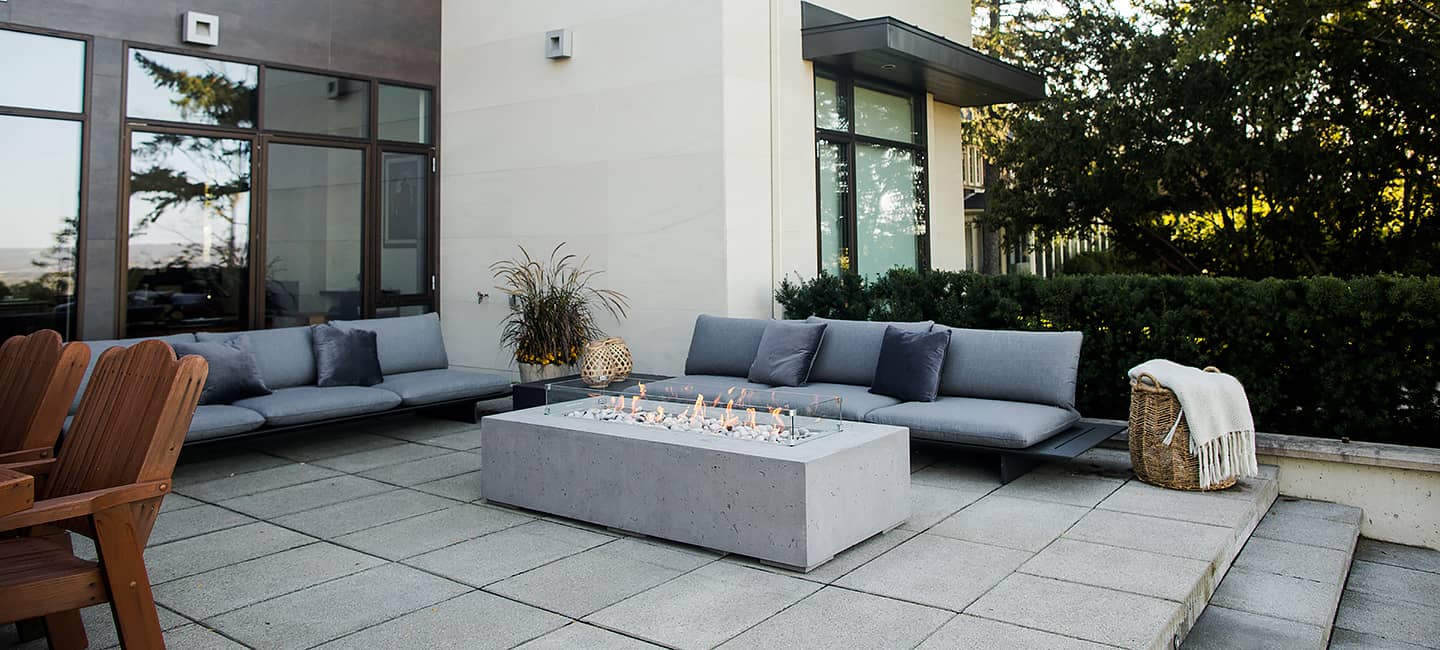
Gas fire pits add an attractive decorative element to decks and patios.
Wood-burning fire pits
If you want a more traditional outdoor heating method, wood-burning fire pits offer the whole package: the flickering flames, the crackling sound of burning logs, and the distinct smell of burning wood.
Two advantages wood-burning fire pits have over gas fire pits are that they typically cost less and they’re capable of producing more heat.
The trade-offs of these benefits are notable, however – wood-burning fire pits demand far more prep and cleanup maintenance than gas fire pits and starting fires takes a lot longer. They’re also subject to more municipal fire safety restrictions.
2. Patio heaters
Patio heaters are one of the most popular outdoor heating options available. Homeowners appreciate these versatile products for their affordability, efficiency, and ease of use.
Powered by propane, natural gas, or electricity, patio heaters come in a variety of forms including freestanding units, tabletop models, and wall-mounted options.
Although they’re not quite as effective as fire pits or fireplaces at boosting a deck or patio’s ambiance, patio heaters do make backyard gatherings more comfy with their warmth and soft glow. Most patio heaters also operate silently. Here’s an overview of what the different types of patio heaters offer.
Electric patio heaters
Most electric patio heaters use infrared technology to produce radiant heat. This type of heater is commonly referred to as an infrared or radiant heater, which is the same thing.
Radiant heaters are designed to warm up floors and objects in an area. This process helps a space retain heat better compared to just blowing heat into the air as convection heating does. Electric patio heaters are one of the most energy-efficient ways to heat an outdoor living space.
Electric heaters are simple to set up – all you need is an electrical outlet. They can be easily moved from one spot to another on a deck or patio and are an excellent choice for areas where open flames are not allowed or a safety risk if you have pets or children.
Propane patio heaters
Another type of patio heater that’s easy to set up and use are propane heaters. They’re powered by a propane tank that is typically stored in the base, which makes them easy to move around. One benefit of using a propane heater is that no permanent installation is required.
Another advantage of propane patio heaters is that they can heat up a space quickly, providing almost instant warmth. Propane heaters are also more effective at heating larger areas.
The biggest drawback of a propane heater is the inconvenience of having to occasionally refill its tank. Just like a propane grill, it’s wise to have a backup tank on hand to avoid running out of fuel in the middle of a backyard gathering.
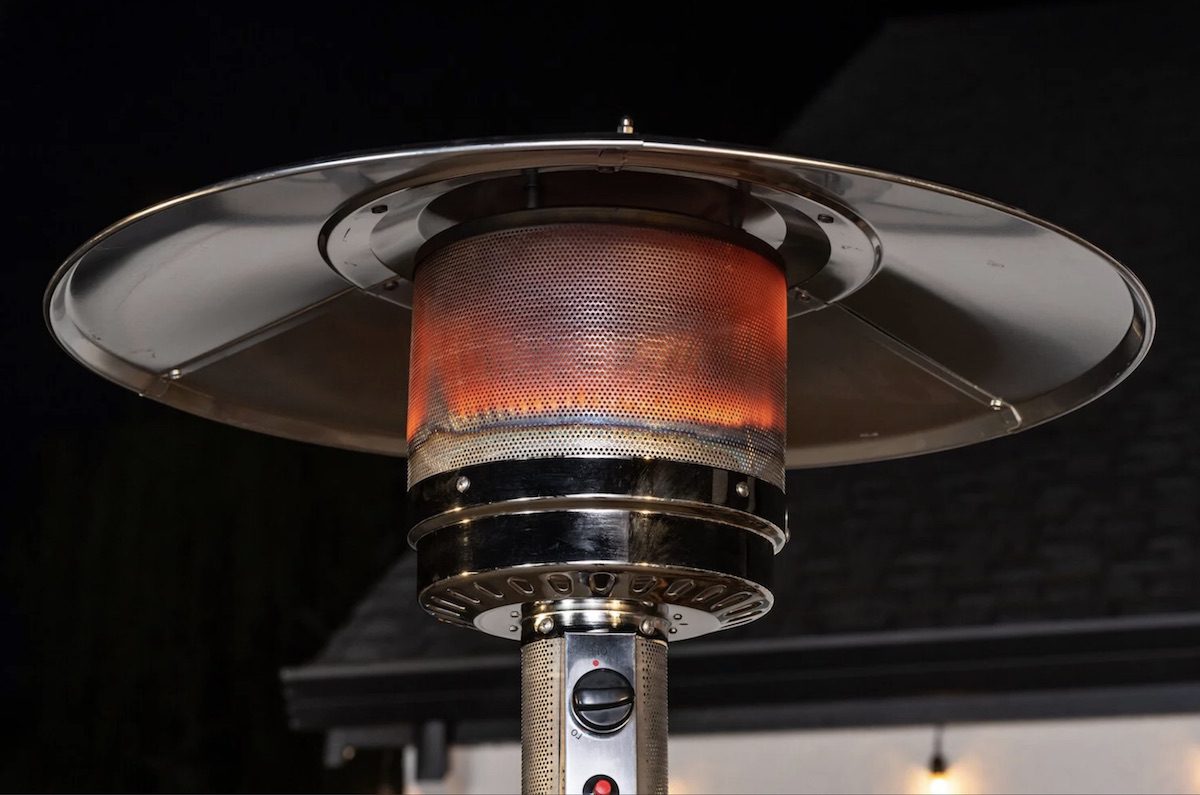
Natural gas patio heaters
For those who prefer a more permanent outdoor heating option, a natural gas patio heater is the way to go. Because a natural gas heater lacks the mobility of propane and electric heaters, you need to carefully plan where it will be installed on your deck or patio.
These heaters are connected to a natural gas line, which delivers a consistent supply of fuel supply. For this reason, natural gas heaters are one of the most convenient long-term outdoor heating options.
Like propane, natural gas heaters offer consistent heat output and are ideal for heating larger backyard spaces. One advantage of natural gas over propane is that it costs less.
3. Outdoor fireplaces
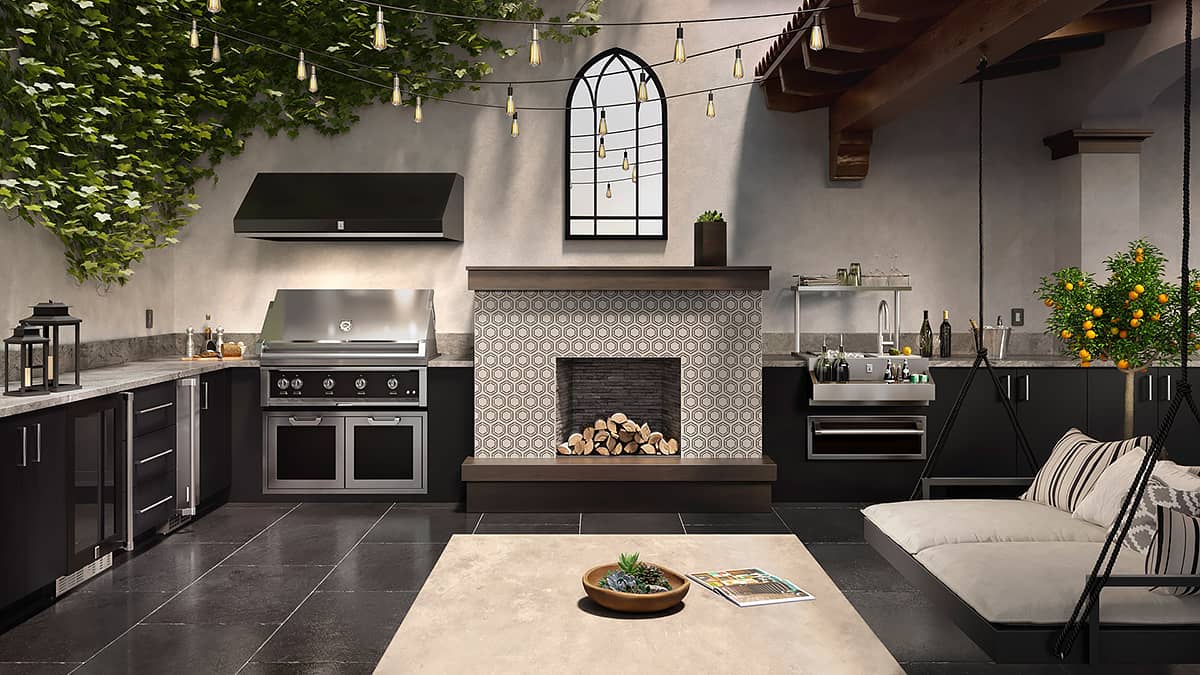
A wood-burning or gas-burning fireplace becomes an important architectural feature in an outdoor living space.
Most outdoor fireplaces are either wood-burning or gas-powered. They have very similar benefits and drawbacks to fire pits, so we won’t cover them again. We will, however, take a look at a few of the differences that set them apart from those other outdoor heating options.
Adding a custom outdoor fireplace is the most impactful way to make a serious statement with your outdoor heating system. Outdoor fireplaces are often built into the structure of a patio or deck, adding an impressive architectural feature that improves a backyard’s overall aesthetic.
Building a backyard fireplace aligns with the modern trend of incorporating more indoor design elements outdoors, as 20% of the experts in that Fixr survey believed.
The biggest drawback of outdoor fireplaces is their cost. Although some high-end gas fire pits aren’t cheap, most fireplace additions are an expensive investment due to their permanent installation and the materials used to construct them. Outdoor fireplaces are generally considered to add value to a home, however.
4. Chimineas
Perhaps the least well-known type of outdoor heating option are chimineas, which is Spanish for “chimney”. Chimineas are made from terracotta clay or metals like cast iron, stainless steel, and cast aluminum.
They’re fuelled by wood, gas, or pellets, offering similar pros and cons to other wood-burning and gas heaters in terms of maintenance and convenience. Chimineas are another cost-effective outdoor heating solution.
Chimineas have a compact vertical design with an open-mouth fire pit and a chimney to direct smoke upwards instead of into the seating area. They most commonly have a distinct bulbous shape, but you can find many different styles and shapes nowadays, too.
The distinct rustic look of a chiminea gives an outdoor living space warming appeal (literally and figuratively). Because chimineas are freestanding, they can also be moved around on a deck or patio.
The heat from a chiminea radiates outwards, providing warmth in a small, focused area. This makes them ideal for smaller patios and intimate gatherings.
Get one of the best outdoor heating options
These popular outdoor heating options provide a great way to extend the use of your outdoor living space throughout the year.
Whether you prefer the simplicity of an electric patio heater, the convenience and visual appeal of a gas fire pit, or the luxury of an outdoor fireplace, there’s an outdoor heating solution to meet every need and budget.
Outeriors carries one of the best outdoor heating options: handcrafted Dekko fire pits. These durable, high-quality fire pits are made with lightweight concrete and can be installed virtually anywhere in your backyard.
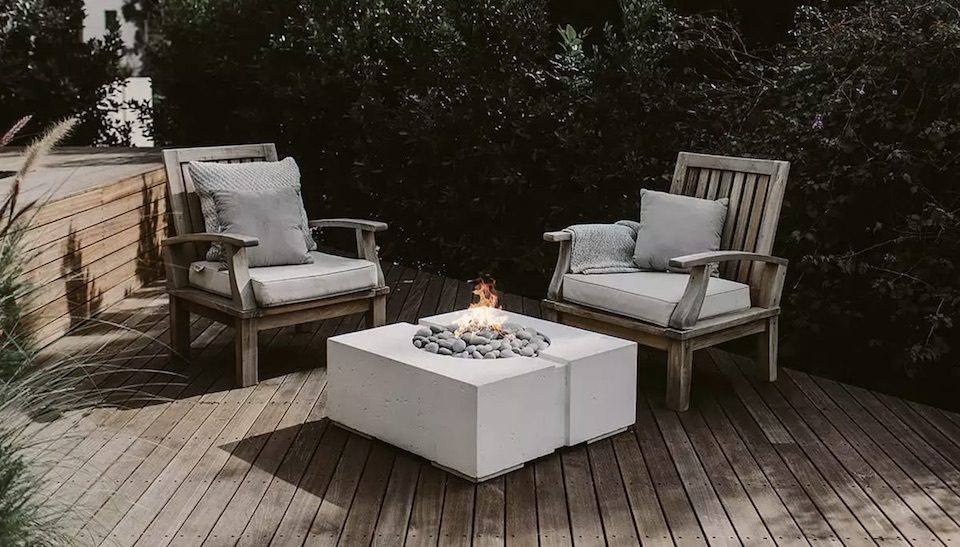
Extend your outdoor living enjoyment with the warmth and ambiance an outdoor heater provides.
We also specialize in creating custom-designed outdoor kitchens and can handle all aspects of your project from start to finish.
Enhance your outdoor living experience by scheduling a free design consultation with us. Stop by our Vaughan showroom to view our fire pits and luxury outdoor kitchen displays!
Please share this post if you found it useful.
